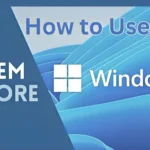Visual Basic is a popular programming language used to create Windows applications. It’s easy to use. This article covers the fundamentals of Visual Basic. What is Visual Basic, as well as its history, key features, and application development applications?
What is Visual Basic?
Microsoft developed Visual Basic (VB), an object-oriented programming language and development environment, in 1991. The language known as “BASIC,” which stands for “Beginners All-purpose Symbolic Instruction Code,” has changed over time. Software developers can use GUI-based features under the VB programming framework to change code segments by dragging and dropping objects. It enables programmers to use graphical elements to define the appearance, behavior, and functionality of various objects.
It is believed that VB is an event-driven language that is easy to learn and write code in. It is designed to encourage rapid application development (RAD), in which the early stages of the development cycle are devoted to creating the application prototype rather than writing complex code.
Adaptive software development, or RAD, gives developers more importance to creating prototypes than to software planning. Because of this, experts don’t have to start from scratch when writing complex codes; instead, they can quickly introduce software updates and make numerous iterations.
History
Having debuted in 1991, Visual Basic is regarded as the third generation of programming languages that use events. VB was used to create many Windows programs in the 1990s.
Throughout the 1990s, VB developed further until the release of Visual Basic 6, which was superseded by VB.NET in 1998. On the other hand, the classic VB 6 is highly compatible with Visual Basic for Applications, which is the program most frequently used today to automate Microsoft Office tasks.
Benefits
The programming language BASIC, from which VB is derived, is straightforward to use, particularly when creating executable files.
Moreover, the Visual Basic IDE offers easily understood perspectives for managing the program structure.
All things considered, Visual Basic for Applications (VB) facilitates the quick development of Windows-based apps and helps with database access through the use of ActiveX data objects (ADO), allowing programmers to utilize various objects and ActiveX control.
However, when VB is used in conjunction with Microsoft’s COM interface, it becomes extremely useful. VB can be used to integrate COM components that have been written in a variety of languages. Furthermore, Visual Basic offers an integrated development environment (IDE) that is specifically designed to facilitate Rapid Application Development (RAD) in addition to a programming language. Programmers can now create graphical user interfaces (GUIs) and link them to features inside applications with ease.
Features
- Memory Constraints: A significant quantity of memory is needed for the initial installation of Visual Basic. The language naturally requires a lot of space because it comes with a GUI-based development kit. Furthermore, unlike the C language, initializing structures at declaration time is not possible with VB. The development environment is also appropriate for programs that need less processing time.
- Widespread Applicability: Because of its ability to facilitate “rapid application development,” VB is preferred by programmers over other languages. Despite being limited to the Microsoft operating system, Visual Basic is still widely used in the programming community. The language is generally useful for designing graphical user interfaces (GUIs) without requiring a lot of code, such as front-end databases, which let programmers create more advanced programs than those created with the VC++, Delphi, and PowerBuilder programming languages.
- Object-oriented Framework: Programmers can easily manage the functions of large, complex, and constantly updated programs thanks to Visual Basic’s object-oriented framework. Because of this, VB facilitates code reusability and scalability, which raises the developed software’s overall efficiency.
- Component Object Model (COM): Different programming languages can communicate with one another between processes thanks to the COM feature. As a result, the VB development environment can be integrated with the COM element written in any programming language.
- Miscellaneous Features: Code snippets and IntelliSense are two features that Visual Basic uses to enable automatic code generation for its visual objects. Furthermore, the “AutoCorrect” functionality in Visual Basic allows code debugging while the program is running in real time. Additionally, developing programs for the web, Windows, mobile devices, and various other platforms requires knowledge of VB.
Uses
- Database Software: VB is typically used by developers to create systems that must frequently handle huge databases. Users don’t need to write complex code to integrate a range of database functionalities into a project once it has been developed using GUI tools. Additionally, users can access and manage databases made with various programs, such as MS Access, Oracle, MySQL, and others, using VB.
- Game Development: It’s not well known that VB produces elegant codes. On the other hand, users can use GUI tools in the development environment to write game codes. Furthermore, RAD makes it simpler to develop a game prototype without having to learn the complexities of its coding. When it comes to 3D animations, VB is limited. For 3D functionality, an external DLL is needed. For 2D games, VB is still the recommended choice.
- Net Software Applications: As previously mentioned, Visual Basic gave rise to VB.Net. As a result, VB programmers have simple access to several .NET libraries that are necessary for creating software applications on various platforms, including social media, messaging, e-commerce order processing, and logistics management.
Conclusion
What is Visual Basic, Programming languages such as Visual Basic (VB) are widely used because of their ease of use and quick application development speed. It first appeared in 1991 and has since developed into VB.NET, a widely useful tool for cross-platform software applications, database management, and game development. The GUI-based approach of VB emphasizes adaptability and ease of use across a wide range of programming needs, making it possible to create Windows apps efficiently.





